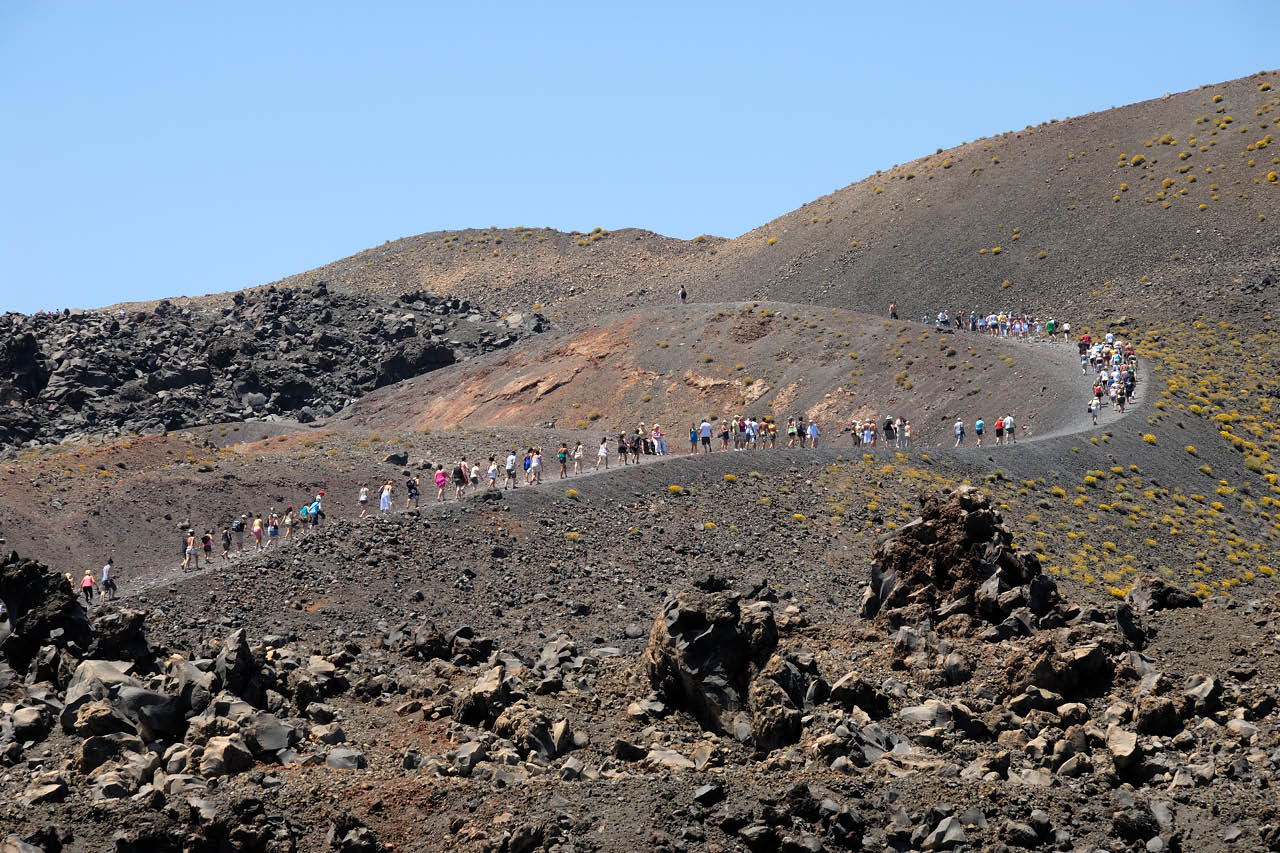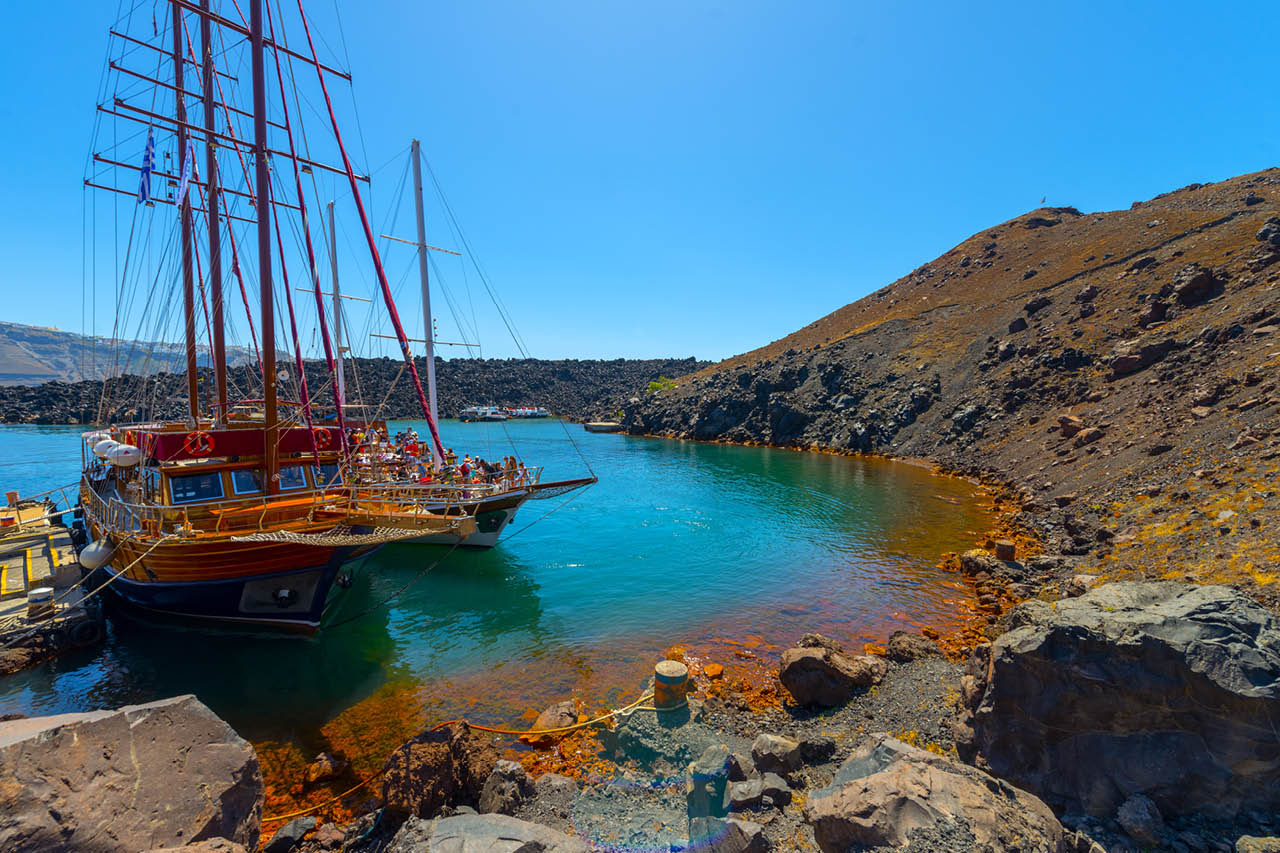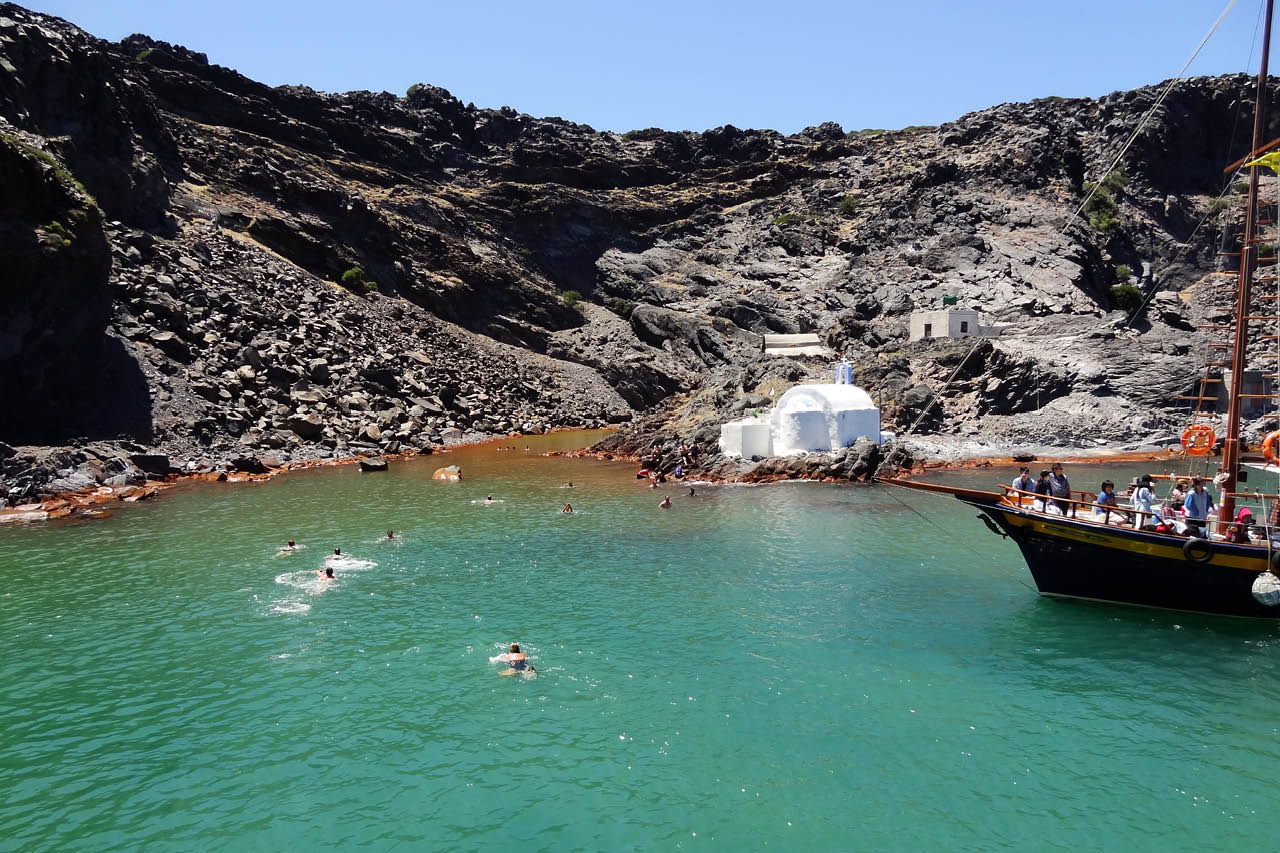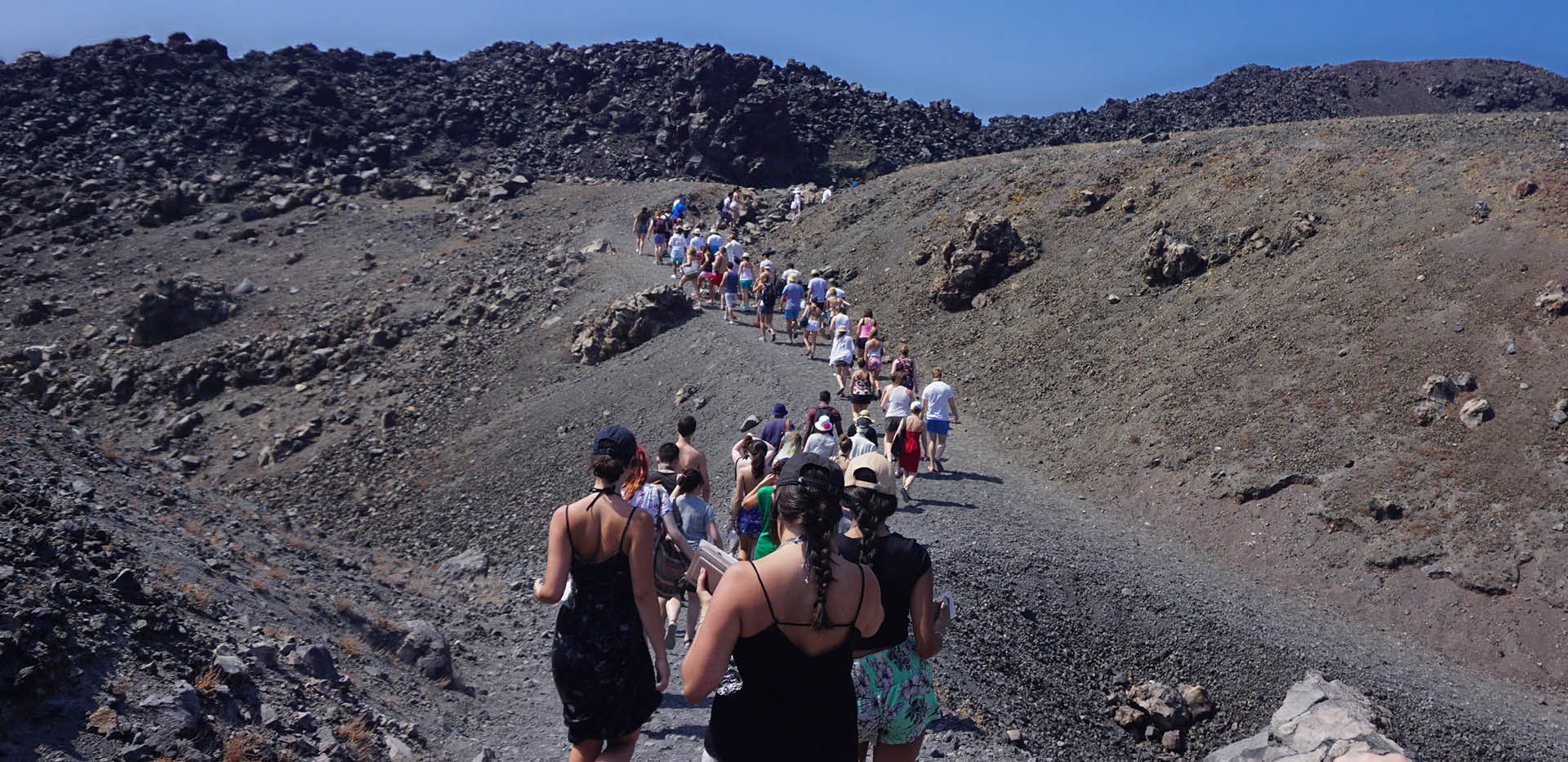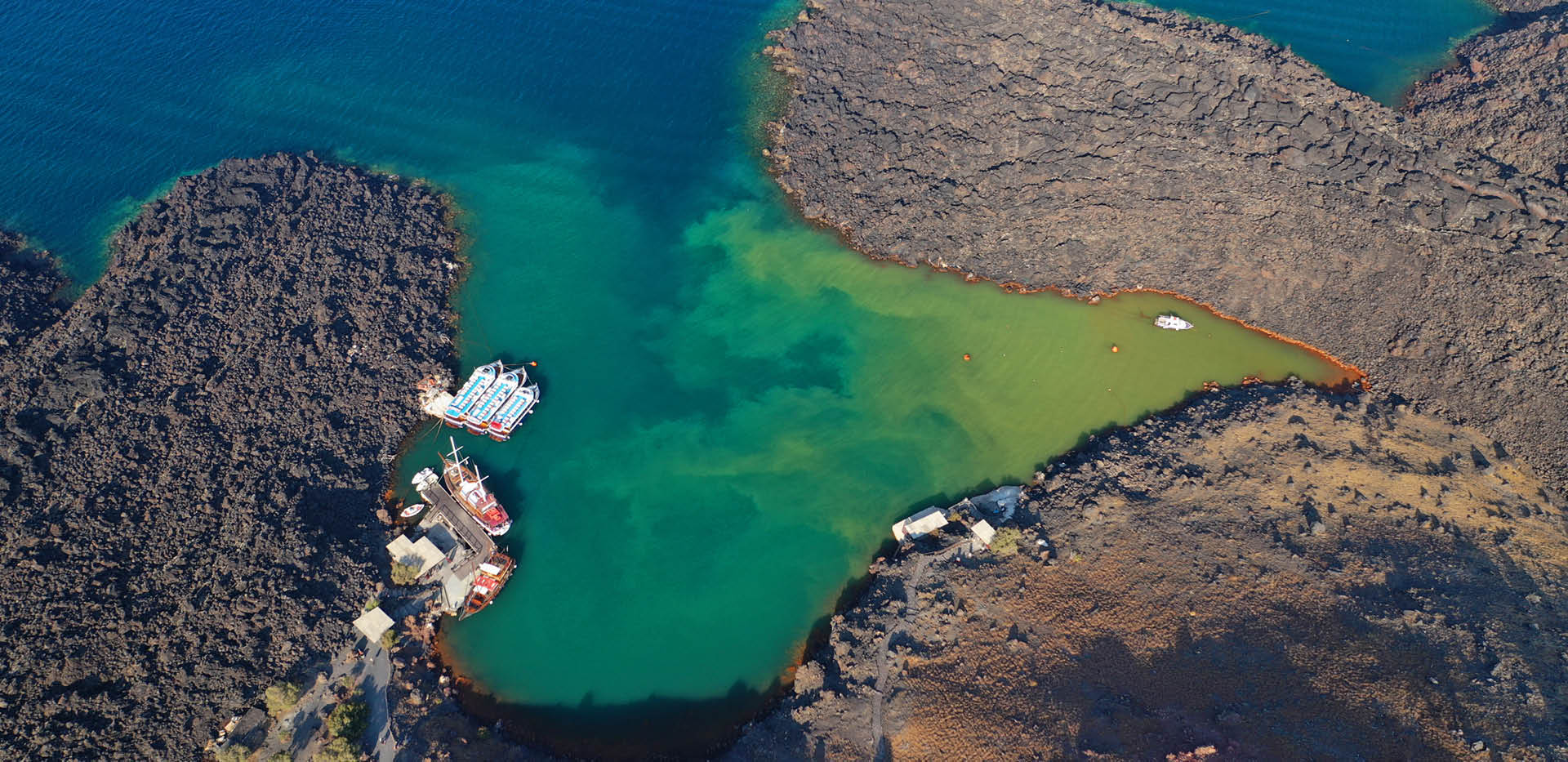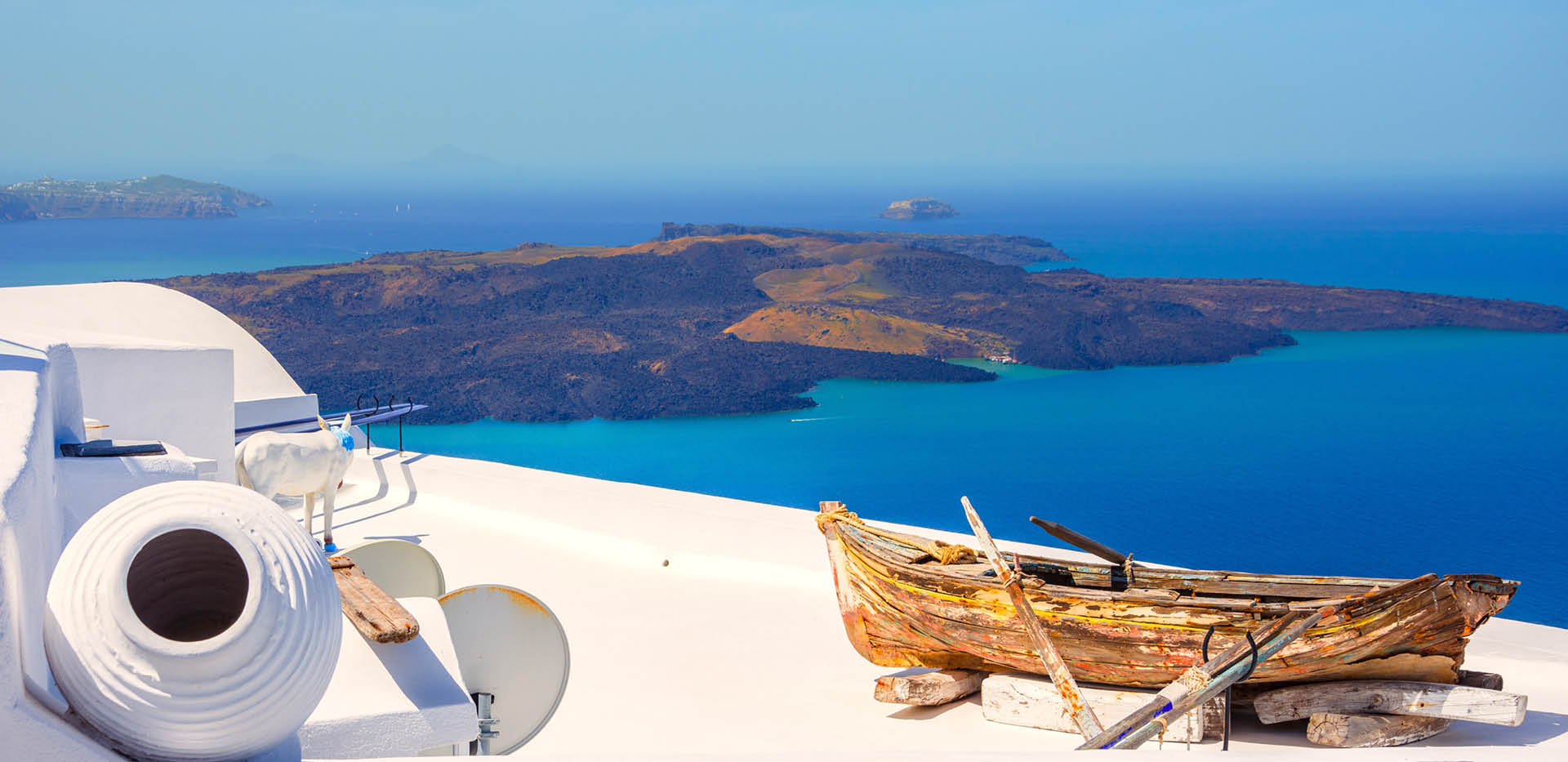BOILING POINT
Summer on the volcano
SANTORINI'S GRACE
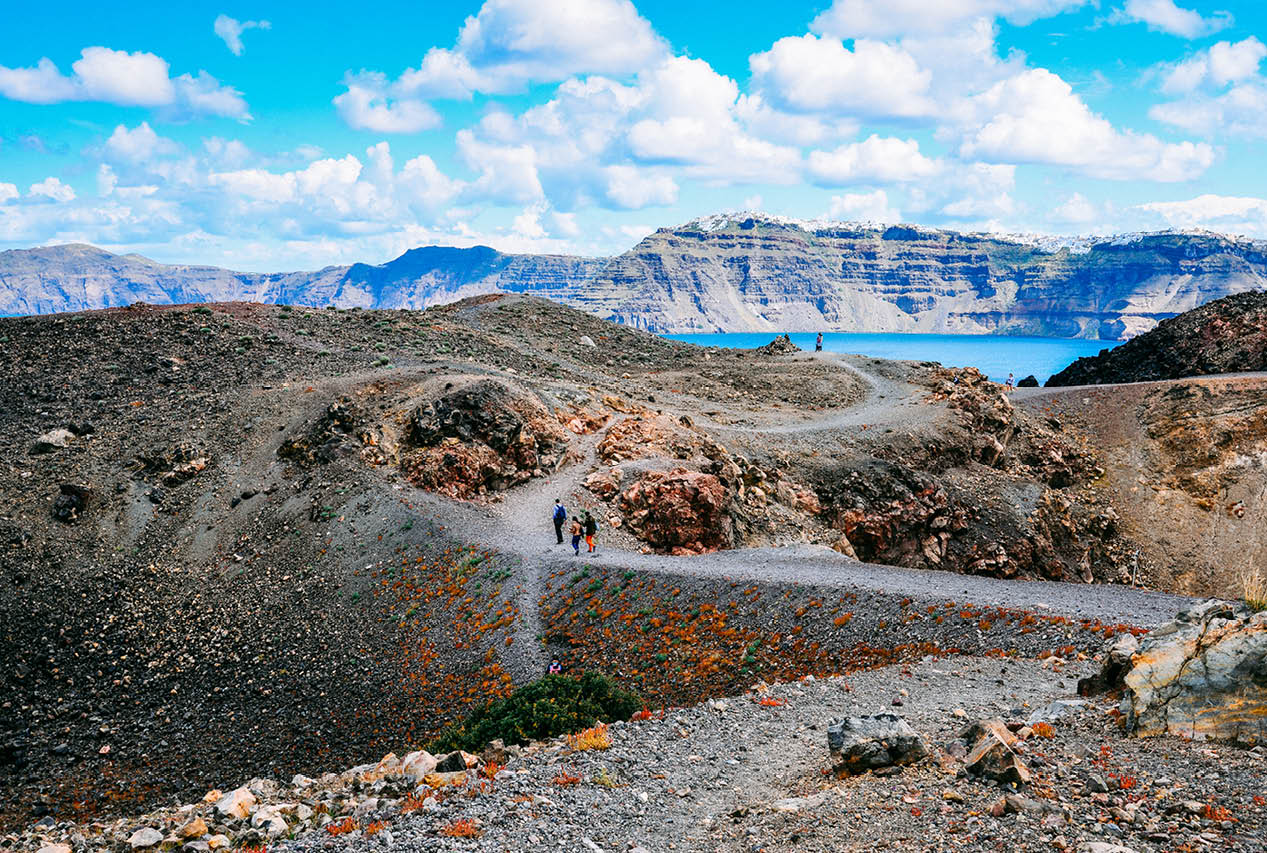
How many times in your life will you have the chance to walk over a “boiling pot”? Only bent and the steamy soles of your shoes can tell you. The island’s tradermark Caldera is there, active, holding a worldwide record of being the only inhabited caldera in the world.
“Before landing on Santorini and mixing ourselves with its people, we must consider for a brief space the particular feature of the island, namely, the volcano. The Hephaestus, as they call it, has made of Santorin, one of the most terrible spots in the world, and has had a powerful influence on its inhabitants…
…All round this central basin, which is the cone of the volcano, the island presents a frontage of precipitous volcanic cliffs, from 500 to 1000 feet in height, all in strata of twisted and contorted volcanic lava, red, green and black, giving the whole place a hideous yet fascinating appearance… The depth of the water in this central basin is immense; the cliffs go straight down into it, so that there is no possible anchorage, and the vessels have to be tethered, so to speak, to the shore…
…The island has at various times and seasons sprung from the submerged volcano, and has been formed by multiplied eruptions.
The crater opened outside the circle in 1650; Therasia broke off, when we cannot say; the land in many places has subsided. Another eruption may suddenly come on, and cover Thera with feet of pumice or engulf her in the sea. And yet the inhabitants are happy, and amass money year by year; The action of this volcano must have had, in the course of ages, powerful influence over the inhabitants; for, from their position, the towns, built on the edge of the cliff overlooking the basin, are as if placed in an amphitheatre to overlook the mysterious workings of their volcano…’’
All the above are excerpts from James Theodore Bent’s book “The Cyclades’’, ‘‘Life among the insular Greeks”. Bent was an Oxfordian archaeologist, historian and explorer who dedicated his life to research in the Levant and Africa. After extended tours of the Cycladic islands between 1882 and 1884 along with his wife, Bent published in 1885 what has become a classic account of his discoveries in what is now one of the most popular tourist regions of Greece.
136 years following his detailed impressions prove is that while almost everything remains the same, all seems to be different!
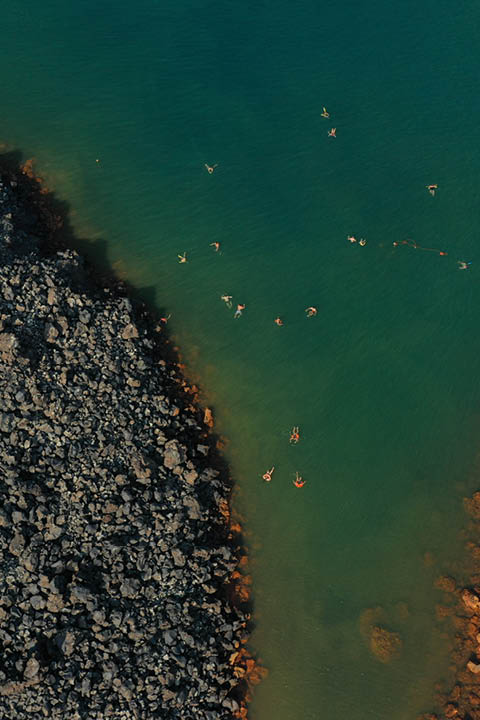

Millions of years ago
Santorini owes its uniqueness mostly to its volcano; one of the most important volcanos around the world, born within the sea, thus shifting greatly the geological aspect of the entire Eastern Mediterranean, just like it influenced the area’s human life and activity. The volcano is active and was formed millions of years ago. Part of the Aegean Volcanic Arc –along with the volcanos of Methana, Milos and Nisyros– it is the result of the African tectonic plate sinking beneath the Eurasian plate. The big eruption that took place during prehistoric times is known as the “Minoan” eruption and is considered one of the greatest in the history of the world.
Since then, Santorini’s volcano has erupted several times over the course of centuries constantly reshaping the island by forming or destroying other islets in its perimeter. Today, when locals mention the volcano they refer to the little island of Nea Kameni in the middle of the circular perimeter formed by Santorini, Thirasia and Aspronisi. Besides, in Nea Kameni one can watch the steam coming out of fumaroles directly from the earth’s depths, whereas approximately 70 years ago the eruption of 1950 formed its most recent grounds. Right next to it, the island of Palea Kameni was formed approximately 2,000 years ago by the eruption of 47 AC. Both volcanic islets can be visited and walked over until reaching the fumaroles of Nea Kameni or in order to swim in the thermal waters of Palea Kameni. Scientists from various fields of study closely observe the volcano’s activity not only because it is active but also as they believe that Santorini’s Volcanic Complex –including the two over-water volcanos of Palea and Nea Kameni, as well as the underwater volcano of Kolumbo– constitutes the most active section of the Aegean Volcanic Arc.
The “Minoan” eruption
During prehistoric times Santorini’s volcano was shaken by a terrible eruption. Until then, the island had an almost round shape forming the island of Stroggyli (meaning “round” in Greek) which covered approximately the entire area of Santorini, Thirasia and Aspronisi altogether. The eruption sank its largest portion, thus destroying it, and formed the Caldera of Santorini as we know it today. It is considered one of the greatest volcanic eruptions in human history, compared by scientists only to that of Indonesia in 1815. It was called “Minoan” as for many years the scientific community, led by archaeologist Spyros Marinatos’ theory, believed that Santorini’s volcano and the enormous tsunami following its eruption wiped out the Minoan Civilization in Crete. However, according to modern methods of radiometric dating, the eruption of Santorini’s volcano took place in the end of the 17th century BC, and more specifically in 1613 BC, whereas the Minoan Civilization was preserved –although in decline– for one more century.
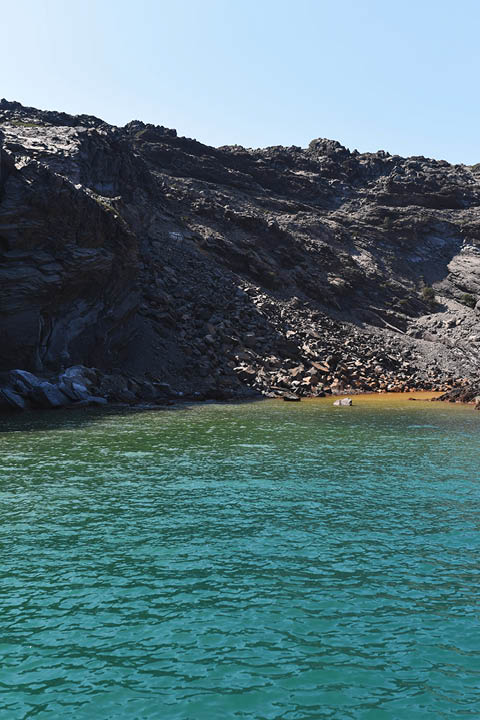
SANTORINI'S GRACE
Sources: James Theodore Bent’s book “The Cyclades”, “Life among the insular Greeks” / Santoriniinfo.gr


